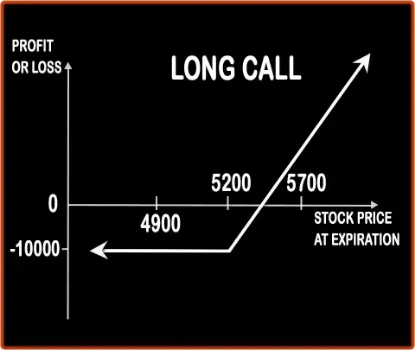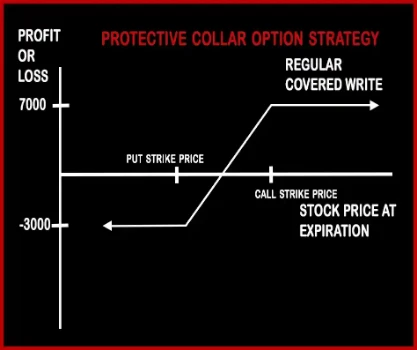Compare Strategies
| LONG CALL | PROTECTIVE COLLAR | |
|---|---|---|

|

|
|
| About Strategy |
Long Call Option StrategyThis is one of the basic strategies as it involves entering into one position i.e. buying the Call Option only. Any investor who buys the Call Option will be bullish in nature and would be expecting the market to give decent returns in the near future. Risk:
|
Protective Collar Strategy This Strategy is implemented when the investor requires downside protection for the short - to medium term but at lower cost. Buying protective puts can be an expensive proposition and writing OTM calls can defray the cost of the puts quite substantially. Protective Collar is considered as bearish to neutral strategy. In this strategy risk and reward is both are limited. This .. |
LONG CALL Vs PROTECTIVE COLLAR - Details
| LONG CALL | PROTECTIVE COLLAR | |
|---|---|---|
| Market View | Bullish | Neutral |
| Type (CE/PE) | CE (Call Option) | CE (Call Option) + PE (Put Option) |
| Number Of Positions | 1 | 2 |
| Strategy Level | Beginner Level | Beginners |
| Reward Profile | Unlimited | Limited |
| Risk Profile | Limited | Limited |
| Breakeven Point | Strike Price + Premium | Purchase Price of Underlying + Net Premium Paid |
LONG CALL Vs PROTECTIVE COLLAR - When & How to use ?
| LONG CALL | PROTECTIVE COLLAR | |
|---|---|---|
| Market View | Bullish (Any investor who buys the Call Option will be bullish in nature and would be expecting the market to give decent returns in the near future.) | Neutral |
| When to use? | This strategy work when an investor expect the underlying instrument move in upward direction. | This Strategy is implemented when the investor requires downside protection for the short - to medium term but at lower cost. |
| Action | Buying Call option | • Short 1 Call Option, • Long 1 Put Option |
| Breakeven Point | Strike price + Premium | Purchase Price of Underlying + Net Premium Paid |
LONG CALL Vs PROTECTIVE COLLAR - Risk & Reward
| LONG CALL | PROTECTIVE COLLAR | |
|---|---|---|
| Maximum Profit Scenario | Underlying Asset close above from the strike price on expiry. | • Call strike - stock purchase price - net premium paid + net credit received |
| Maximum Loss Scenario | Premium Paid | • Stock purchase price - put strike - net premium paid - put strike + net credit received |
| Risk | Limited | Limited |
| Reward | Unlimited | Limited |
LONG CALL Vs PROTECTIVE COLLAR - Strategy Pros & Cons
| LONG CALL | PROTECTIVE COLLAR | |
|---|---|---|
| Similar Strategies | Protective Put | Bull Put Spread, Bull Call Spread |
| Disadvantage | • In this strategy, there is not protection against the underlying stock falling in value. • 100% loss if the strike price, expiration dates or underlying stocks are badly chosen. | • Potential profit is lower or limited. |
| Advantages | • Less investment, more profit. • Unlimited profit with limited risk. • High leverage than simply owning the stock. | The Risk is limited. |